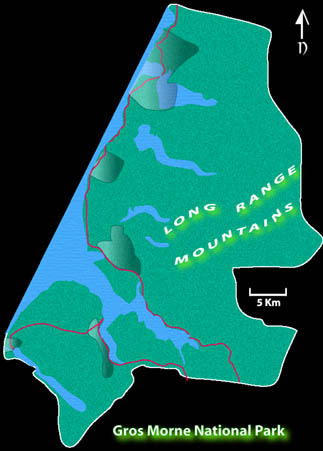
Gros Morne is a very diverse landscape encompassing a large portion of the islands west coast.
It straddles three eco-regions, the Western Forest, Northern Peninsula Forest and Long Range Barrens.
Mountainous terrain gives way to a flat coastal delta that was once the sea bottom.
Deep fjords cut into the mountain plateau have since been landlocked to become fresh water ponds.
The mountainsides are still heavily forested with primarily Balsam Fir. These areas are home to the worlds greatest concentration of Moose. Caribou live on the barren plateaus and sometimes migrate to the lowlands. The highway follows the coast through traditional outports which continue normal activities within enclaves that are outside the parks jurisdiction. Although some of the smaller settlements were removed when the park first came into existance the remaining population has benefited from a booming tourism industry while maintaining most of their traditional rights. Traffic throughout he area is high from early June until late Sept. but the roadstops and planned trails keep most travellers away from the parks most remote areas thereby allowing them to maintain their value for hardcore wilderness fans.
|



















